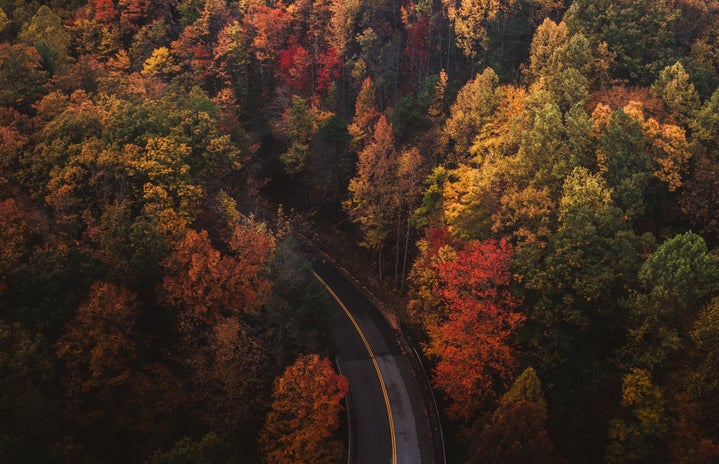One of my favorite things about the fall season is when the leaves change color. It brings a comforting, cozy vibe to the surrounding environment. While noticing the progression of the leaves here on Michigan State University’s campus, I started to wonder why the leaves change colors. The process seemed so underappreciated, so I decided to do some research.
One of the main factors associated with the changes in leaves depends on what you might expect: their chemical composition. The Forest Service of the United States Department of Agriculture reports that there are three main pigments that are to blame for the changing colors. Firstly, there is chlorophyll, which produces the green pigment in the leaves throughout spring and summer and is necessary for photosynthesis. Next, there is anthocyanin, which can produce reds, blues, and purples in items such as cherries, blueberries, and plums, as well as leaves! Finally, there are carotenoids, which create yellow, orange, and brown colors. Each of these pigments releases certain colors depending on what wavelengths of light they absorb and reflect. The colors that we see are the wavelengths that are reflected and allow the light to travel to our eyes.
Chlorophyll and carotenoids are present throughout spring, summer, and fall. Anthocyanin tends to be produced in the fall. Once the days begin to get shorter and the trees have less direct sunlight to use for photosynthesis, the chlorophyll production decreases rapidly until it stops altogether. By that point, the anthocyanin and carotenoids are uncovered, revealing the beautiful colors of fall.
The length of the night is another factor contributing to the changing of leaves. Longer nights signal the slowing of chlorophyll production as well as the initiation of the process of falling. The veins that provide energy and fluids from the leaves to the tree itself begin to clog from a thin layer of cells forming at the base of the stem. This clogging traps sugars, which promotes the production of anthocyanin. Eventually, that layer of cells at the base of the leaf causes it to break from the tree and fall to the ground.
Lastly, the weather plays a factor in determining the brilliance of the leaf color spectrum. The Smithsonian claims that dry, sunny, and cool weather leading into the fall season tends to produce the best colors. The leaf colors mainly depend on the varying moisture levels and temperature in the surrounding area.
One of my favorite things about nature is that nothing goes to waste. Once these leaves fall, they decompose to replenish the soil with nutrients and provide food for some organisms. Shortly after, the entire process starts again. Now, when walking by pretty trees, you can stop and admire the reasons for the changes, all part of the beauty of science.


